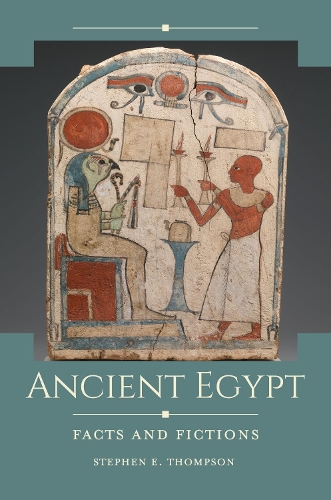
Ancient Egypt: Facts and Fictions
(Hardback)
Publishing Details
Ancient Egypt: Facts and Fictions
By (Author) Stephen E. Thompson
Bloomsbury Publishing PLC
ABC-CLIO
8th November 2019
United States
Classifications
Tertiary Education
Non Fiction
Middle Eastern history
Social and cultural history
Historiography
932
Physical Properties
Hardback
264
Width 156mm, Height 235mm
595g
Description
Comprising a unique collection of primary sources, this book critically examines several topics relating to ancient Egypt that are of high interest to readers but about which misconceptions abound. With its pyramids, mummies, and sphinxes, ancient Egypt has fascinated us for centuries. It has been the setting of many films and novels, figuring prominently in popular culture. Much of what the average reader believes about this civilization, however, is mistaken. Through a unique collection of primary source documents, this book critically examines several topics related to ancient Egypt and about which misconceptions abound. Primary sources, many in new translations by the author, are drawn from ancient Egyptian, classical Greek and Roman, Muslim, early Christian, and modern European documents. These sources shed light on popular misconceptions. Such topics include the divinity of the pharaoh, the role of animals in ancient Egyptian religion, the purpose of the Egyptian pyramids, the use of slave labor, the Egyptian hieroglyphic writing system, the role of Cleopatra in the defeat of Marc Antony and the fall of the Roman Republic, and the influence of Egyptian religion on the development of early Christianity. By studying these documents, users will be able to develop their skills interpreting and evaluating primary sources.
Reviews
This book and the series will provide a great introduction to primary sources and critical thinking for advanced high school and college students. Summing Up: Recommended. General readers through upper-division undergraduates. * Choice *
Author Bio
Stephen E. Thompson,, PhD, is associate director for student life at NSU University School, Davie, Florida. He has taught at Brown University, Boston University, Rhode Island College, Florida Atlantic University, and Brigham Young University.
